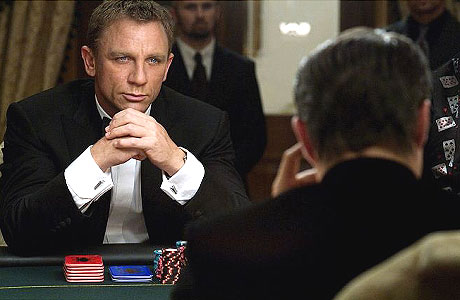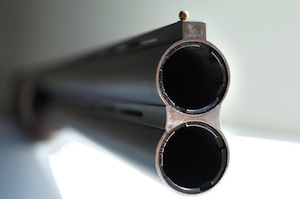
The notion of barreling in poker – bluffing at the pot on multiple betting rounds – is a concept that many novice players are confused by. First and foremost, you should never be barreling in poker on two streets in a row because your opponent has checked to you twice and you think he’ll therefore fold. Contrary to popular belief, plays like the double barrel bluff should be used infrequently and only in very specific spots.
For the purposes of this article, let’s assume that you’re the pre-flop aggressor and get one caller from the blinds. In any potential double barrel spot with these parameters, the three most important factors to consider are your own image, the texture of the board, and your opponent’s style.
Your Table Image

As it’s forever stressed in the game of poker, the relevance of your image in this situation depends on your opponents. If you’re playing against a donkey who you know has no concept of image, then stop reading now. There’s no need to attempt to bluff a bad player because in most cases, they aren’t folding. However, if you’re up against more competent opponents, there may be a few opportunities for you to double barrel in position. Despite the fact that good players will most likely be aware of what you’re doing, if your timing is right, they’ll have no choice but to fold to that overcard.
Board Texture
Generally, the best double barrel card to fire at after betting the flop or turn is an overcard to the board. When you bet this card, your perceived range gets stronger while your opponent’s gets weaker since his calling range on the flop is heavily weighted towards top pair (now second pair), middle pair (now third pair), or a weak draw. Obviously, this isn’t always the case – certainly your opponent is going to flat a set on dry boards – but it’s a good starting range. By the same reasoning, the worst card to fire a second bullet at is one that pairs the board because it hasn’t really changed anything.
Your Opponent’s Style and Perceived Range
Knowing your opponent’s playing style and what they’re most apt to do with their range on certain board textures is key to finding perfect double barrel spots. Many weak opponents will call a turn bet with a mediocre holding, but fold to more pressure on the river. You just have to decipher who these opponents are and target them.
Good Double Barrel Spot
 Let’s say the action is folded to you on the button and you open with Qs-6s. An opponent in the big blind calls and the flop is Jd-7s-2c. The big blind checks to you and when you bet 60% of the pot, he calls. The turn is the ace of hearts, which is an incredible card for you to fire off another bet. It’s more than reasonable to assume that a hand like Q-J is at the top of your opponent’s flatting range, while his more likely holdings include a seven: K-7, Q-7, T-7, 9-7, and 8-7. These are all hands that a semi-competent opponent will probably fold to a turn bullet and they might even fold a weak pair of jacks if your sizing and timing are correct.
Let’s say the action is folded to you on the button and you open with Qs-6s. An opponent in the big blind calls and the flop is Jd-7s-2c. The big blind checks to you and when you bet 60% of the pot, he calls. The turn is the ace of hearts, which is an incredible card for you to fire off another bet. It’s more than reasonable to assume that a hand like Q-J is at the top of your opponent’s flatting range, while his more likely holdings include a seven: K-7, Q-7, T-7, 9-7, and 8-7. These are all hands that a semi-competent opponent will probably fold to a turn bullet and they might even fold a weak pair of jacks if your sizing and timing are correct.
Bad Double Barrel Spot
The pre-flop scenario is the same as above, except this time, the flop comes down 8d-7c-2h. Your opponent once again check-calls your continuation bet. The turn brings the seven of spades, which pairs the board. Assuming your opponent is not completely crazy, the seven doesn’t change the dynamics of the hand enough for you to represent a hand that’ll make him fold.

Comments are closed.